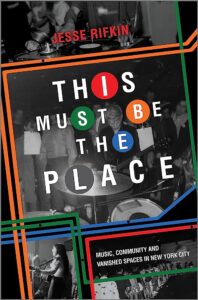 This Must Be the Place: Music, Community and Vanished Spaces in New York City – July 11, 2023 by Jesse Rifkin
This Must Be the Place: Music, Community and Vanished Spaces in New York City – July 11, 2023 by Jesse Rifkin
Take a walk through almost any neighborhood in Manhattan and you’ll likely pass some of the most significant clubs in American music history. But you won’t know it—almost all of these venues have been demolished or repurposed, leaving no record of what they were, how they shaped music scenes or their impact on the neighborhoods around them.
Traditional music history tells us that famous scenes are created by brilliant, singular artists. But dig deeper and you’ll find that they’re actually created by cheap rent, empty space and other unglamorous factors that allow artistic communities to flourish. The 1960s folk scene would have never existed without access to Greenwich Village’s Washington Square Park. If the city hadn’t gone bankrupt in 1975, there would have been no punk rock. Brooklyn indie rock of the 2000s was only able to come together because of the borough’s many empty warehouse spaces. But these scenes are more than just moments of artistic genius—they’re also part of the urban gentrification cycle, one that often displaces other communities and, eventually, the musicians themselves.
Drawing from over a hundred exclusive interviews with a wide range of musicians, deejays and scenesters (including members of Peter, Paul and Mary; White Zombie; Moldy Peaches; Sonic Youth; Treacherous Three; Cro-Mags; Sun Ra Arkestra; and Suicide), writer, historian and tour guide Jesse Rifkin painstakingly reconstructs the physical history of numerous classic New York music scenes. This Must Be the Place examines how these scenes came together and fell apart—and shows how these communal artistic experiences are not just for rarefied geniuses but available to us all.
 All Hopped Up and Ready to Go: Music from the Streets of New York 1927-77 – October 26, 2009 by Tony Fletcher
All Hopped Up and Ready to Go: Music from the Streets of New York 1927-77 – October 26, 2009 by Tony Fletcher
A penetrating and entertaining exploration of New York’s music scene from Cubop through folk, punk, and hip-hop.
From Tony Fletcher, the acclaimed biographer of Keith Moon, comes an incisive history of New York’s seminal music scenes and their vast contributions to our culture. Fletcher paints a vibrant picture of mid-twentieth-century New York and the ways in which its indigenous art, theater, literature, and political movements converged to create such unique music.
With great attention to the colorful characters behind the sounds, from trumpet player Dizzy Gillespie to Tito Puente, Bob Dylan, and the Ramones, he takes us through bebop, the Latin music scene, the folk revival, glitter music, disco, punk, and hip-hop as they emerged from the neighborhood streets of Harlem, the East and West Village, Brooklyn, the Bronx, and Queens. All the while, Fletcher goes well beyond the history of the music to explain just what it was about these distinctive New York sounds that took the entire nation by storm.
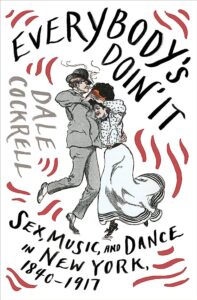 Everybody’s Doin’ It: Sex, Music, and Dance in New York, 1840-1917 – Illustrated, August 13, 2019
Everybody’s Doin’ It: Sex, Music, and Dance in New York, 1840-1917 – Illustrated, August 13, 2019
Everybody’s Doin’ It is the eye-opening story of popular music’s seventy-year rise in the brothels, dance halls, and dives of New York City. It traces the birth of popular music, including ragtime and jazz, to convivial meeting places for sex, drink, music, and dance. Whether coming from a single piano player or a small band, live music was a nightly feature in New York’s spirited dives, where men and women, often black and white, mingled freely―to the horror of the elite.
This rollicking demimonde drove the development of an energetic dance music that would soon span the world. The Virginia Minstrels, Juba, Stephen Foster, Irving Berlin and his hit “Alexander’s Ragtime Band,” and the Original Dixieland Jass Band all played a part in popularizing startling new sounds.
Musicologist Dale Cockrell recreates this ephemeral underground world by mining tabloids, newspapers, court records of police busts, lurid exposés, journals, and the reports of undercover detectives working for social-reform organizations, who were sent in to gather evidence against such low-life places. Everybody’s Doin’ It illuminates the how, why, and where of America’s popular music and its buoyant journey from the dangerous Five Points of downtown to the interracial black and tans of Harlem.
Love Goes to Buildings on Fire: Five Years in New York That Changed Music Forever – September 4, 2012 by Will Hermes
Punk rock and hip-hop. Disco and salsa. The loft jazz scene and the downtown composers known as Minimalists. In the mid-1970s, New York City was a laboratory where all the major styles of modern music were reinvented―block by block, by musicians who knew, admired, and borrowed from one another. Crime was everywhere, the government was broke, and the infrastructure was collapsing. But rent was cheap, and the possibilities for musical exploration were limitless.
Love Goes to Buildings on Fire is the first book to tell the full story of the era’s music scenes and the phenomenal and surprising ways they intersected. From New Year’s Day 1973 to New Year’s Eve 1977, the book moves panoramically from post-Dylan Greenwich Village, to the arson-scarred South Bronx barrios where salsa and hip-hop were created, to the lower Manhattan lofts where jazz and classical music were reimagined, to ramshackle clubs like CBGB and the Gallery, where rock and dance music were hot-wired for a new generation.

From Washington Square Park and the Gaslight Café to WNYC Radio and Folkways Records, New York City’s cultural, artistic, and commercial assets helped to shape a distinctively urban breeding ground for the folk music revival of the 1950s and 60s. Folk City explores New York’s central role in fueling the nationwide craze for folk music in postwar America. It involves the efforts of record company producers and executives, club owners, concert promoters, festival organizers, musicologists, agents and managers, editors and writers – and, of course, musicians and audiences.
In Folk City, authors Stephen Petrus and Ron Cohen capture the exuberance of the times and introduce readers to a host of characters who brought a new style to the biggest audience in the history of popular music. Among the savvy New York entrepreneurs committed to promoting folk music were Izzy Young of the Folklore Center, Mike Porco of Gerde’s Folk City, and John Hammond of Columbia Records. While these and other businessmen developed commercial networks for musicians, the performance venues provided the artists space to test their mettle. The authors portray Village coffee houses not simply as lively venues but as incubators of a burgeoning counterculture, where artists from diverse backgrounds honed their performance techniques and challenged social conventions. Accessible and engaging, fresh and provocative, rich in anecdotes and primary sources, Folk City is lavishly illustrated with images collected for the accompanying major exhibition at the Museum of the City of New York in 2015.

Forged in the fires of the Bronx and Kingston, Jamaica, hip-hop has been a generation-defining global movement. In a post–civil rights era rapidly transformed by deindustrialization and globalization, hip-hop gave voiceless youths a chance to address these seismic changes, and became a job-making engine and the Esperanto of youth rebellion. Hip-hop crystallized a multiracial generation’s worldview, and forever transformed politics and culture. But the epic story of how that happened has never been fully told . . . until now.
 Dream Baby Dream: Suicide: A New York City Story – October 12, 2015 by Kris Needs
Dream Baby Dream: Suicide: A New York City Story – October 12, 2015 by Kris Needs
Appearing in early 70s New York City as primal prototype street punks, Suicide are now hailed as one of the most important and influential groups of the 20th century, inspiring that decade’s major musical movements but too feared and shunned to be awarded their rightful acclaim at the time. Confronting shocked audiences with their electronic “New York blues”, singer Alan Vega and instrumentalist Martin Rev fearlessly mirrored the city’s sleazy underbelly and decay on blood-freezing gutter-scapes such as ‘Ghost Rider’ and ‘Frankie Teardrop’ while invoking doo-wop purity on timeless love songs like ‘Cheree’ and ‘Dream Baby Dream’. The book charts Suicide’s uncompromising roller coaster from formative days in performance art and avant garde experimentation to chaotic early shows at drug-infested downtown hotbed the Project of Living Artists.Along with detailed accounts of Suicide’s influences, contemporaries and environment which spawned them, the book will position the duo as one of New York’s most pivotal but derided outfits as the story moves through their pioneering first album, 1978’s shockingly violent UK tour supporting The Clash and subsequent recordings, live sorties and respective parallel solo careers, going up to the present day. The author’s eye witness accounts and extensive first-hand interviews with Alan Vega and Martin Rev are joined by conversations with producers Craig Leon, Marty Thau and Bob Blank, contemporaries including Blondie, Jayne County and the New York Dolls and fans such as Nick Cave, Bobby Gillespie and The Clash; adding to a definitive account of this most unique group. With an introduction by Lydia Lunch
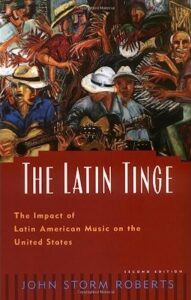 The Latin Tinge: The Impact of Latin American Music on the United States – January 21, 1999 by John Storm Roberts
The Latin Tinge: The Impact of Latin American Music on the United States – January 21, 1999 by John Storm Roberts
The Tejano superstar Selena and the tango revival both in the dance clubs and on Broadway are only the most obvious symptoms of how central Latin music is to American musical life. Latino rap has brought a musical revolution, while Latin and Brazilian jazz are ever more significant on the jazz scene. With the first edition of The Latin Tinge, John Storm Roberts offered revolutionary insight into the enormous importance of Latin influences in U.S. popular music of all kinds. Now, in this revised second edition, Roberts updates the history of Latin American influences on the American music scene over the last twenty years.
From the merengue wave to the great traditions of salsa and norteña music to the fusion styles of Cubop and Latin rock, Roberts provides a comprehensive review. With an update on the jazz scene and the careers of legendary musicians as well as newer bands on the circuit, the second edition of The Latin Tinge sheds new light on a rich and complex subject: the crucial contribution that Latin rhythms are making to our uniquely American idiom.
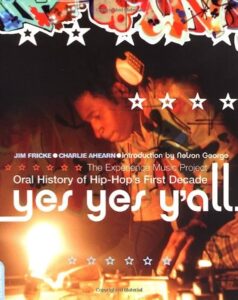 Yes Yes Y’all: The Experience Music Project Oral History Of Hip-hop’s First Decade
Yes Yes Y’all: The Experience Music Project Oral History Of Hip-hop’s First Decade
by Jim Fricke & Charlie Ahearn
Hip-hop today is ubiquitous, dominating not only the music industry but also popular culture around the world. Like rock and roll before it, it has permanently transformed music, art, dance and fashion while capturing millions of listeners – and this vast cultural revolution was all started by a bunch of street kids in the ravaged Bronx of the 1970s. Documenting hip-hop’s remarkable genesis, this book tells its stories in voices that bristle with vitality, character, humour and menace, tracing the music from DJ Kool Herc’s first parties in 1973 through the release of “Rapper’s Delight” in 1979 and the rise of the new school in the mid 1980s. Fricke and Ahearn weave an electric narrative from the accounts of over 50 of hip-hop’s founders and stars, old school and new, including Afrika Bambaataa, Grandmaster Flash, DJ Kool Herc, Melle Mel, Grand Wizard Theodore, Grandmaster Caz, Rahiem, Fab 5 Freddy, Tony Tone and DMC. A wealth of previously unseen photographs, flyers and posters illustrate the text. This work is a chorus of voices, a tale of artistry in the face of extraordinary adversity, and the definitive history of a revolution created with nothing more than a microphone, a turntable and a dance floor.
 Lost Rockers: Broken Dreams and Crashed Careers – March 8, 2016
Lost Rockers: Broken Dreams and Crashed Careers – March 8, 2016
by Steven Blush, Paul Rachman, & Tony Mann
Hit songs, record deals, sexual adoration, private jets, stretch limos, and wealth: these are the trappings of musical success. But the pop stars living these seemingly glamorous lives are the exceptions in the music business and not the rule. Standing in the wings, just off stage and waiting, are those many talented and deserving musicians who just barley missed their big break.
Lost Rockers is about those musicians who at one point in time were on the verge of success but who never quite “made it.” Some of them were so close they could taste it, and others never had a chance. To become a star you need: talent, charisma, dedication, intelligence, energy, intensity, and a helluva lot of luck. These are all pieces in the puzzle–and for these lost rockers, the stars just didn’t align quite right. But the dawn of the 21st century offers these unknowns a chance for redemption. With new technologies offering easier ways of finding and listening to music, these artists might just be discovered anew by a generation of fans eager to mine the past in hopes of discovering something fresh.
Timed with the release of a documentary film of the same name, the latest collaboration between acclaimed writer/ filmmaker Steven Blush and director Paul Rachman, Lost Rockers offers a compelling narrative connecting the lives of different musicians and their strangely similar adventures in the entertainment industry. All of these almost-famous musicians have gripping backstories; they’ve also recorded some powerful music that you won’t believe you’ve never heard. In our nation, it’s all about second chances, so let’s start diggin’ in the crates at flea markets, garage sales, thrift shops, and swap meets, and uncover the lost secrets of America’s rich musical heritage.
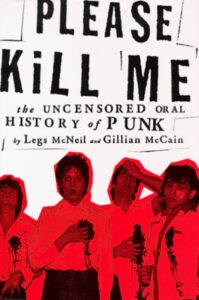 Please Kill Me: The Uncensored Oral History of Punk Paperback – April 13, 2006 by Legs McNeil and Gillian McCain
Please Kill Me: The Uncensored Oral History of Punk Paperback – April 13, 2006 by Legs McNeil and Gillian McCain
A Time Out and Daily News Top Ten Book of the Year upon its initial release, Please Kill Me is the first oral history of the most nihilist of all pop movements. Iggy Pop, Danny Fields, Dee Dee and Joey Ramone, Malcom McLaren, Jim Carroll, and scores of other famous and infamous punk figures lend their voices to this definitive account of that outrageous, explosive era. From its origins in the twilight years of Andy Warhol’s New York reign to its last gasps as eighties corporate rock, the phenomenon known as punk is scrutinized, eulogized, and idealized by the people who were there and who made it happen.
 Never Say No To A Rock Star: In the Studio with Dylan, Sinatra, Jagger and More… – July 1, 2016 by Glenn Berger
Never Say No To A Rock Star: In the Studio with Dylan, Sinatra, Jagger and More… – July 1, 2016 by Glenn Berger
In 1974, at the age of seventeen, author Glenn Berger served as “Schlepper” and apprentice to the legendary recording engineer Phil Ramone at New York City’s A&R Studios, and was witness to music history on an almost daily and nightly basis as pop and rock icons such as Paul Simon, Bob Dylan, Mick Jagger, Frank Sinatra, Burt Bacharach, Bette Midler, and James Brown performed their hit-making magic, honed their sound, strutted their stuff, bared their souls, and threw epic tantrums. In this memoir, full of revelatory and previously unknown anecdotal observations of these musical giants, Glenn recounts how he quickly learned the ropes to move up from schlepperhood to assistant to the tyrannical Ramone, and eventually, to become a recording engineer superstar himself. Not only is Never Say No to A Rock Star a fascinating, hilarious and poignant behind-the-scenes look of this musical Mecca, but Berger, now a prominent psychologist, looking back through the prism of his youthful experience and his years working as a counselor and therapist, provides a telling and honest examination of the nature of fame and success and the corollaries between creativity, madness and self-destruction.
 Oh Snap!: The Rap Photography of Ricky Powell Paperback – March 15, 1998
Oh Snap!: The Rap Photography of Ricky Powell Paperback – March 15, 1998

